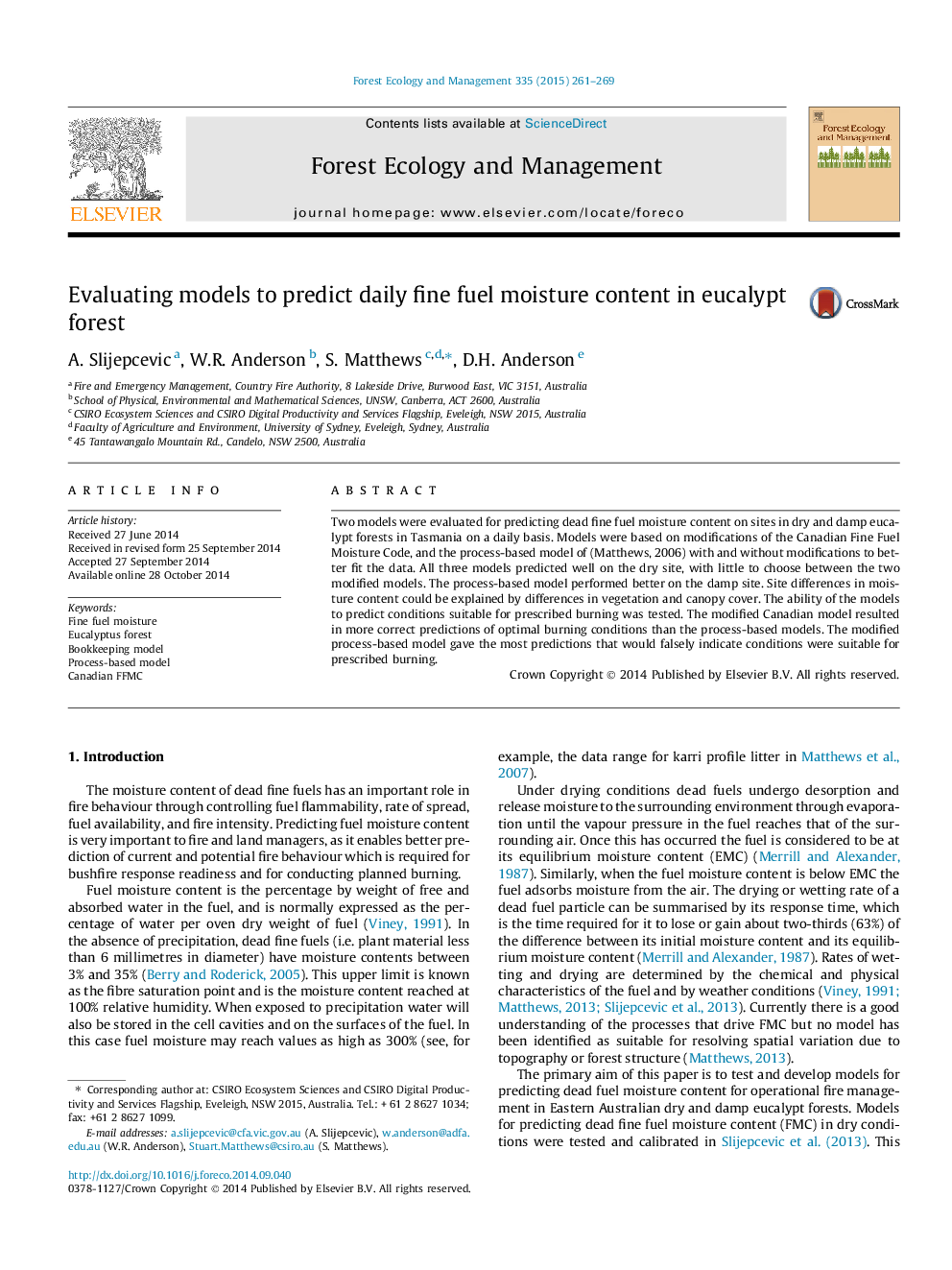| Article ID | Journal | Published Year | Pages | File Type |
|---|---|---|---|---|
| 6543049 | Forest Ecology and Management | 2015 | 9 Pages |
Abstract
Two models were evaluated for predicting dead fine fuel moisture content on sites in dry and damp eucalypt forests in Tasmania on a daily basis. Models were based on modifications of the Canadian Fine Fuel Moisture Code, and the process-based model of (Matthews, 2006) with and without modifications to better fit the data. All three models predicted well on the dry site, with little to choose between the two modified models. The process-based model performed better on the damp site. Site differences in moisture content could be explained by differences in vegetation and canopy cover. The ability of the models to predict conditions suitable for prescribed burning was tested. The modified Canadian model resulted in more correct predictions of optimal burning conditions than the process-based models. The modified process-based model gave the most predictions that would falsely indicate conditions were suitable for prescribed burning.
Keywords
Related Topics
Life Sciences
Agricultural and Biological Sciences
Ecology, Evolution, Behavior and Systematics
Authors
A. Slijepcevic, W.R. Anderson, S. Matthews, D.H. Anderson,
